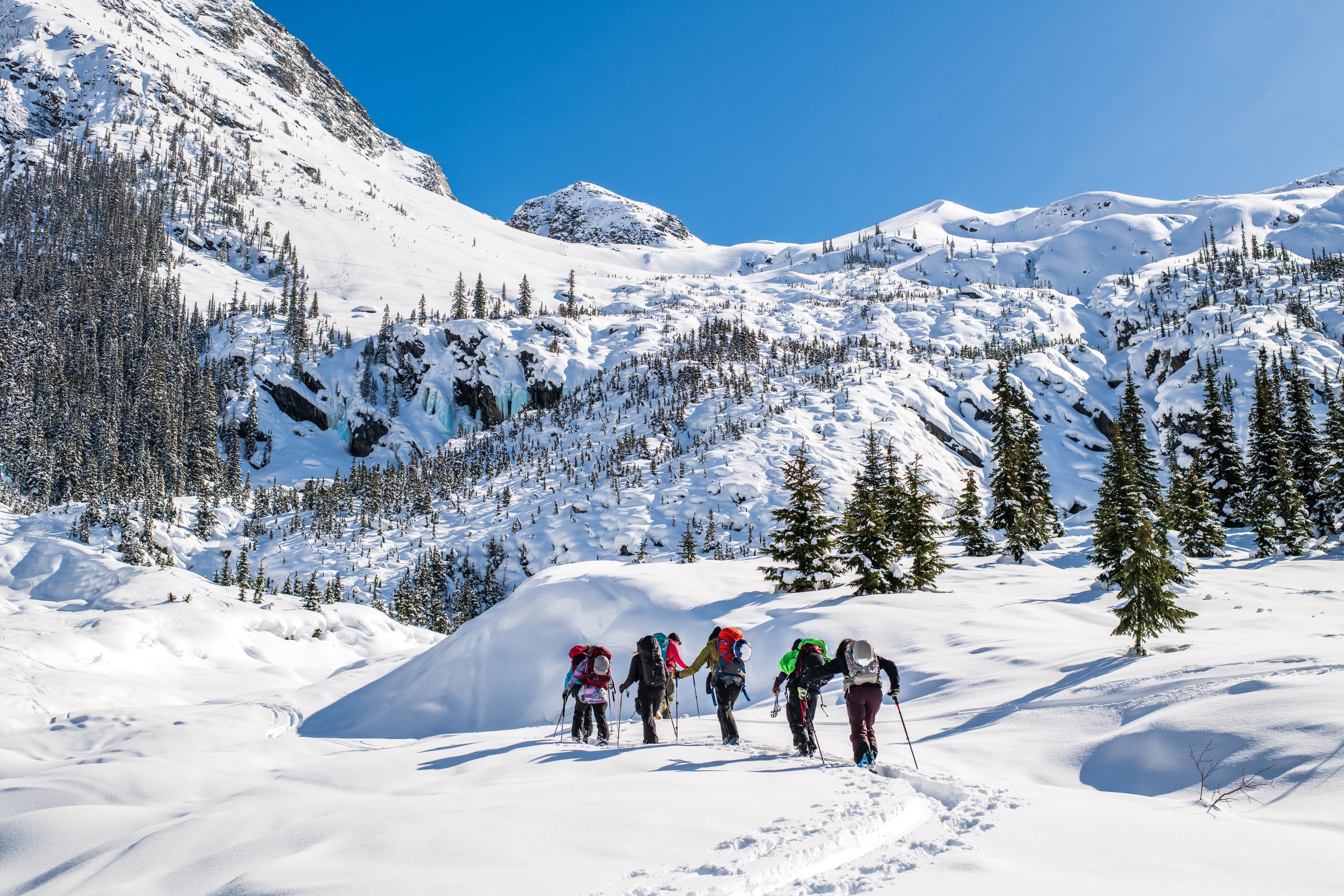Ski Tour·ing: Skiing across open country, walking uphill on skis as well as skiing downhill.
It really is as simple as the definition, and there lies the beauty in the sport's simplicity. It is arguably the easiest way to move quickly and efficiently in the mountains, yet the intricacies of the sport are endless and addicting.
The Big Picture.
The sport has a rich history that starts around 10,000 years ago in China, with paintings that suggest the aboriginals used skis for hunting in the winter. There have been ski-like artifacts and drawings found in places such as Northern Russia, Norway, Sweden and Greenland dating back from 5000 BCE to 3200 BC. Most of this skiing was utilitarian and was used to hunt or travel more efficiently through the snow.
In the mid 1800’s skiing started to emerge as a more popular recreational activity. At this point, it was still largely based in Norway. In the late 1800’s and early 1900’s the sport crossed the ocean to North America.

Revelstoke Ski Club, ca 1892 | Revelstoke Museum & Archives
Canadian Pacific Railway.
The trains began rolling through Rogers Pass Pass bringing tourists and adventure seekers from around the world. The grades through the pass were so steep they were forced to leave behind the dining cars and any extra weight. The CPR alleviated this problem by building the Glacier House in 1887, which began as a simple structure but eventually developed into a large luxurious hotel that would soon become the birthplace of Canadian Mountaineering. The word got out, and soon there were hordes of people from around the world eager to make ascents in this incredible alpine vista.
In 1899, the CPR inaugurated a program of bringing Swiss mountain guides to Canada in order to promote tourism at their mountain hotels in the Rockies and Selkirks. Until this time, all the climbing had been done by mainly local, dedicated amateurs on more moderate routes. From this day forward the Swiss guides would have a tremendous impact on the future of Canadian mountaineering and ski touring.

Construction-on-Macdonald-Tunnel-Rogers-Pass
The Scandinavians.
The Scandinavians brought the love of their sport to the small town of Revelstoke and started the Revelstoke Ski Club – the oldest ski club in BC. The earliest records of the club is a photo of 6 skiers with “odd looking contraptions tied to their feet” in 1891, but the official club status happened in December of 1914. By 1915, it was the largest ski club in Canada and Revelstoke was the “Capital of Canada’s Alps”, the main draw being the big ski jump in Mount Revelstoke National Park. Local legend, Nels Nelsen, was leading the charge, and in 1916 broke the world ski jumping record with an impressive jump of 56m/183ft.
While ski jumping was the most popular and well documented, there are others that used skiing for their work – Ole Westerberg used skis to deliver mail 80kms north of Revelstoke for 35 years, as well as delivering supplies and maintaining a trap line along the way.

Nels Nelson Ski Jumping | 1916
Avalanche Control.
Fast forward to the 1950’s, to when Roger’s Pass became home to one of the first avalanche programs in North America was created to keep the railway safe from avalanches. The program was run by Fred Schleiss, who knew right away that it was critical his crew be competent on skis in order to do their work. On the heels of this program (which was already increasing the amount of ski travel occurring in the Pass) a man named Hans Gmoser arrived from Austria and became the first person to really start promoting backcountry skiing there. He filmed his ski and mountaineering adventures through the 1950’s and 60’s and would show his films around North America, trying to generate interest for his new ski company, Canadian Mountain Holidays, which would eventually become the largest heli ski company in the world.

Avalanche Control Rogers Pass | 1957
Highway 1.
In 1962 the Trans-Canada highway (which follows the same route through Roger’s Pass as the CPR) opened to the public, dramatically reducing travel time between Revelstoke and Golden. The old route would take you up North to Mica via the Big Bend highway. This gave much easier access to backcountry skiers and other road travellers alike, but it wasn’t until the 80s and 90s that recreational skier numbers began to soar. Backcountry users visiting the Pass have increased steadily since and in more recent years have gone through another massive explosion in popularity. It's likely due to the Pass getting over 12m of snow annually.

Trans Canada Highway | Winter 1962
The Resort.
Over the years Revelstoke became the heli-ski and cat-ski capital of the world, as well as the home of the Canadian Avalanche Association. Scandanavians started a ski resort called Ski Mount Mackenzie on the lower slopes of what is now Revelstoke Mountain Resort. in the 90s a T-bar was installed and then a chair lift. In 2007 the town quickly transformed when Revelstoke Mountain Resort started spinning it’s lifts. The town is now full of folks with higher-than-normal stoke levels, and skis in tow.

Top of T-Bar Mt. Mackenzie

More History.


